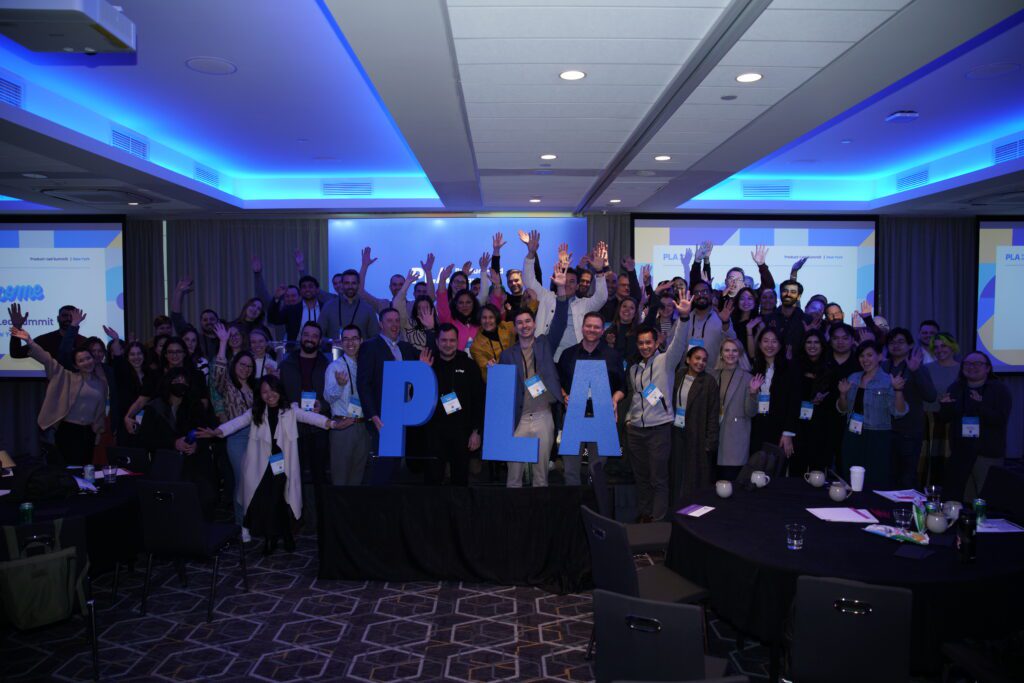“Am I working on the right things?”
“How can I fit it all in?”
I find myself asking these questions almost daily, both in my personal and professional life. How can I spend my time working on the things that matter most?
Even with the world in upheaval and our shift to distributed work, these questions are still top of my mind. With my trips, events, and other plans postponed for now, there are so many other things that can potentially fill up my time in this time of uncertainty.
Many of us live our lives doing 100 things at the same time. Trying to please everyone. Trying to do it all. I certainly have fallen into this camp. As a result, we scatter our energy and don’t make significant, meaningful, or satisfying progress on any of those 100 things.
Recently, I really enjoyed reading the book Essentialism: The Disciplined Pursuit of Less by Greg McKeown and gave a talk about the essentialism concepts internally at ProductPlan. I highly recommend it for product leaders and anyone who aspires to make the biggest possible contribution to their work and life.
If I could summarize this book in one sentence it would be:
“Less but better.”
Now, if there’s a single statement for product managers to live by, that would be it.
I’ve often thought that product leaders can learn lessons about building better products from the methods we use to prioritize our personal life. So let’s look at the concept of “essentialism.”
A Quick Primer on Essentialism
According to the book, an “essentialist” is someone who lives by design, not by default. An essentialist isn’t reactive, but rather makes choices deliberately by separating the vital few from the trivial many.
Essentialism is an approach for determining where your highest value is, and then executing on it—to the exclusion of many other activities. An essentialist says “No” a lot.
According to McKeown, essentialism is not about how to get more things done; it’s about how to get the right things done.
Does that sound a lot like what product managers do every day as we prioritize what to build?
An essentialist says, “I choose to work on only a few things that really matter.” By carefully choosing these few things that matter (for our products and our lives), we can make great leaps forward. Moreover, we’ll live a life that feels in control and one that matters.
The “Non-essentialist” Product Manager
According to McKeown, there are ways that a “non-essentialist” thinks. As I read the book, I found several parallels to ineffective product management. Here are a few patterns that might represent “non-essential” thinking by product managers:
- “It’s all-important.” A non-essentialist product manager will try to be all things to all people. They will struggle to fit it all in – all the meetings, feeling like they are responsible for everything. They are the product expert with all the answers, and no decisions can be made without their input.
- “More.” A non-essentialist product manager will focus on “more.” It’s undisciplined and reactive. More features to beat the competition. More saying “yes” without thinking first. Or saying Yes because it’s the easier path. What’s the harm of fitting in one more user story?
- “Are we working on the right things?” A non-essentialist product manager, because they take on too much, will often feel out of control. They’re unsure if they’re working on the right things, and as a result, will ultimately feel overwhelmed and unsatisfied.
If any of those statements sound familiar, that’s OK. We all fall into that trap occasionally. All of us that are building products, will at some point feel or exhibit these patterns.
Yet there are ways of thinking and organizing our days so we don’t get to that point—after all, don’t we all want a sense of purpose, ease, and satisfaction in our work?
The Mindset of the Essentialist Product Manager
How can you foster the mindset of an essentialist product manager to avoid those traps? Here are four lessons I took away from the book that you can apply to your personal and product life.
1. Create space for thinking.
For most product managers, our days are filled with video meetings, calls, writing emails, writing stories, interruptions on Slack, and so on. With the recent switch to distributed work, we have been given this opportunity to create time in our day for strategic and creative thinking without the constant interruptions.
What would that look like? An essentialist creates time in their day for insights and contemplation, rather than putting out fires all day.
This process also applies to our working space. Many of us are now working from home—is your space one where you can focus? Is it pleasant to be in? Since you might be spending about one-third of your day there, why not make it one that inspires you to think creatively? For me, taking a break during my day for outside time (a walk, run, or even a stroll in my backyard) is a great way to process what to work on next.
2. Define your product’s purpose.
When was the last time you thought through your product’s purpose and mission? The OKRs you’ve been managing? How is your product differentiated from the competition? What is your product best at, and how can you double down on that?
With so much economic disruption, you can no longer take it for granted that your product’s vision and mission will be the correct one going forward.
Now is a time of reset for reflection on those things. What you (and your team) decide will set the stage for which initiatives are the most important things that you choose to work on next.
3. Implement the minimum product.
This is the opposite of the “it’s all-important” mentality. I’ve written a lot about the minimum viable product (or the minimum sellable product) that provides value to customers. Now is the time to take that philosophy to heart.
I recently wrote about decluttering your product backlog. Revisit those epics in your backlog and scale those back. What will give your customers the most value with 50% of the effort you previously estimated?
4. Pause. Say No.
A non-essentialist product manager will pause before eventually saying “Yes.” An essentialist says “No” a lot, focusing on the vital few. Product managers will need to do this with empathy and reasoned explanations about why the answer is No (or “not yet”).
Additionally, it’s not only about saying “No” to feature requests. But rather, not committing to projects and decisions that do not lead you towards the greater goal. By saying No, and having a well thought out justification, you will foster more respect among your peers, stakeholders, and customers. Help them understand what the tradeoffs are. What will they (or the company) be giving up if you choose one path versus another?
If you have items in your product backlog that you now realize you won’t get to within the next six months, that’s probably a sign that you’re committing to too much. Likewise, if your day is back-to-back meetings, perhaps you can review your schedule next week and opt-out of a few.

Takeaways—Claim Back Your Time.
These are only a few ways that product teams and entrepreneurs can introduce an essentialist mentality into their day. In talking with other startup founders and product leaders I often hear the challenges of “not enough time” as a common refrain.
Perhaps with essentialism, we can claim back that time, work on what matters, and make better products as a result.






